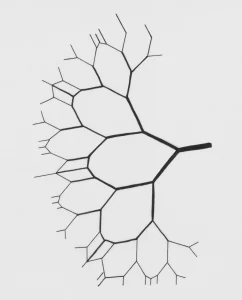Abstract
Ayahuasca, also known as caapi or yage among various South American groups, holds a highly esteemed and millennia-old position in these cultures’ medical and religious pharmacopeia. There is now an increasing interest in the potential for modern medical applications of ayahuasca, as well as concerns regarding its increasing potential for abuse. Toxicological and clinical research to address these issues will require information regarding its metabolism and clearance. Thus, a rapid, sensitive and specific method for characterization and quantitation of the major constituents and of the metabolites of ayahuasca in urine is needed. The present research provides a protocol for conducting such analyses. The characteristics of the method, conducted by sample dilution and using HPLC–electrospray ionization (ESI)–selected reaction monitoring (SRM)–tandem mass spectrometry, are presented. The application of the analytical protocol to urine samples collected from three individuals that were administered ayahuasca has also been demonstrated. The data show that the major metabolite of the hallucinogenic component of ayahuasca, N,N-dimethyltryptamine (DMT), is the corresponding N-oxide, the first time this metabolite has been described in in vivo studies in humans. Further, very little DMT was detected in urine, despite the inhibition of monoamine oxidase afforded by the presence of the harmala alkaloids in ayahuasca. The major harmala alkaloid excreted was tetrahydroharmine. Other excretion products and metabolites were also identified and quantified. The method described would be suitable for use in further toxicological and clinical research on ayahuasca.
McIlhenny, E. H., Riba, J., Barbanoj, M. J., Strassman, R., & Barker, S. A. (2011). Methodology for and the determination of the major constituents and metabolites of the Amazonian botanical medicine ayahuasca in human urine. Biomedical Chromatography, 25(9), 970-984. 10.1002/bmc.1551
Link to full text













